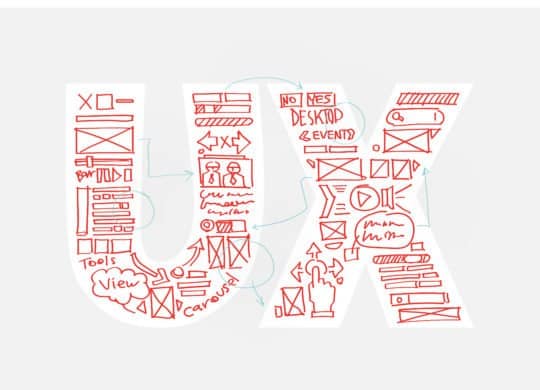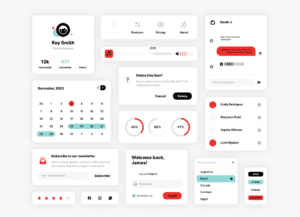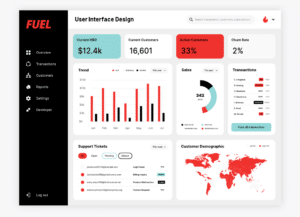Perhaps you’ve heard of “UX,” but it sounds like a buzzword. Maybe you’ve heard of “UI” and are wondering if these are the same thing? Lucky for you, we are here to bring some clarity to the world of UX and help you figure out what it has to do with marketing.
UX, or “User Experience,” is a term coined by Don Norman when he was heading up a group at Apple Computer in the 90s. Now known as the “Father of UX,” he is co-founder of the Norman Nielsen Group and an active participant in the growth of this field. In his words, “user experience encompasses all aspects of the end-user’s interaction with the company, its services, and its products.”
In other words, UX is any experience or interaction a user has with a product or service, as well as everything around it—customer service, technology, packaging, emails… everything! However, we often tend to think of it from a digital perspective. From this standpoint, UX involves designing content, information, and interfaces (i.e., how a website or mobile app looks and functions) in a way that provides value to and generates loyalty with users. The goal of user experience design is to improve things like utility, ease of use, and efficiency in a user’s interaction with a product or service, which, in turn, converts users to brand advocates— and advocates generate revenue.
UX vs. UI
Now, you may have heard UX and UI used interchangeably, which isn’t exactly correct. UI stands for User Interface, and while UX focuses on the customers’ entire experience with a business’ service or product, UI is strictly in the digital realm.
“UX is focused on the user’s journey to solve a problem; UI is focused on how a product’s surfaces look and function.”
– Ken Nortan, Partner at Google Ventures, Ex-product Manager at Google
To use another analogy, UX is the framework of the house, while UI is everything else that you see (the siding, roofing, shingles, etc).

Example of UI on the Lufthansa app
The Importance of UX
If the global COVID-19 pandemic taught us anything, it taught us that digital experiences are more important than ever and will continue to grow. For many businesses, the only brand interactions customers have is via a website, online portal, or e-commerce site. Now, add in the fact that the Internet is a vast and yet simultaneously crowded space—we all know attention spans are only shortening. All of these factors mean one thing: you better be sure your users’ experiences are positive if you hope to retain their attention… and their business.
At the heart of this effort is user-centered design. It means putting users at the center of your decisions and including them throughout the design process. If you’re building a website, it means knowing your end user and understanding their goals, needs, and motivations. It also means testing designs and prototypes with them as you build the site. This is just one example of practical user-centered design, but this mindset will enable you to design confidently and avoid re-work down the road.
Did you know that it is 15x cheaper to fix issues before experiences are built in code? The experts agree, including the IBM System Science Institute, that the cost of fixing issues is significantly lower when identified in the design phase. Additionally, UX-centric companies outperform the S&P 500 stock index by 211%. According to a report by the Design Management Institute, every dollar spent on UX brings in between $2 and $100 in return. It’s almost a no-brainer! So why aren’t more companies doing it? For starters, there’s a lack of understanding or unwillingness from senior leadership, or it simply seems like more work. But isn’t it better to spend a little extra effort upfront to know that you’re on the right track than to build something that no one uses?
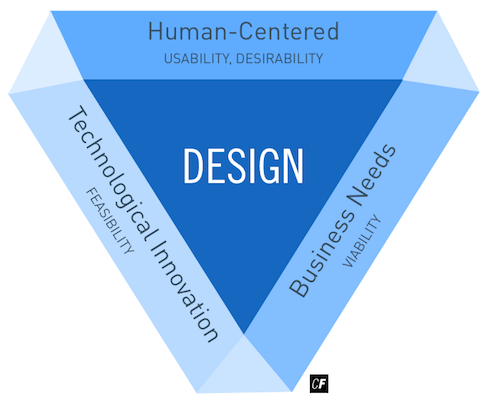
Use Cases for UX
If you’re sold on UX (or even if you aren’t), there are so many use cases for applying this thinking. One example we encounter all the time is websites! Performing user research, we can answer questions like the following that help validate design decisions before we’re too far down the road:
- Can users navigate my wireframe?
- How quickly can users find information on my website?
- Can users find important pages on my website?
- Do visitors understand what a page is about?
- Do users understand how my interface functions?
This is especially important if you’re driving paid traffic to your website. If users don’t understand something or can’t figure out how to get what they need and bounce off your website, you’ve just wasted your money driving them to your site. And frustrated users are unlikely to return.
Another area of marketing that greatly benefits from UX and user research is visual design. Branding, ad creative, logos, signage… the list goes on. Perhaps you want to know answers to questions such as:
- Which ad creative will perform best against my competitors?
- Which icon will be easiest for users to understand?
- Which logo design resonates best with my audience?
User research can help you answer all of these questions and more. And UX design can apply those insights and findings into effective design solutions.
UX and the Design Thinking Process
The field of UX subscribes to the “design thinking process,” a term made famous by author Tim Brown’s book, Change by Design . What “design thinking” does is bring a way of thinking, a process of incorporating design practices and principles, into all stages of product development and of the business. The graphic below illustrates this process. You’ll notice while it appears linear, there are loops between all the phases meaning that circling back and iterating is not perceived as re-work; it’s simply refining and getting to a better end result. The user or end consumer is really at the center, as their needs are driving the entire process.
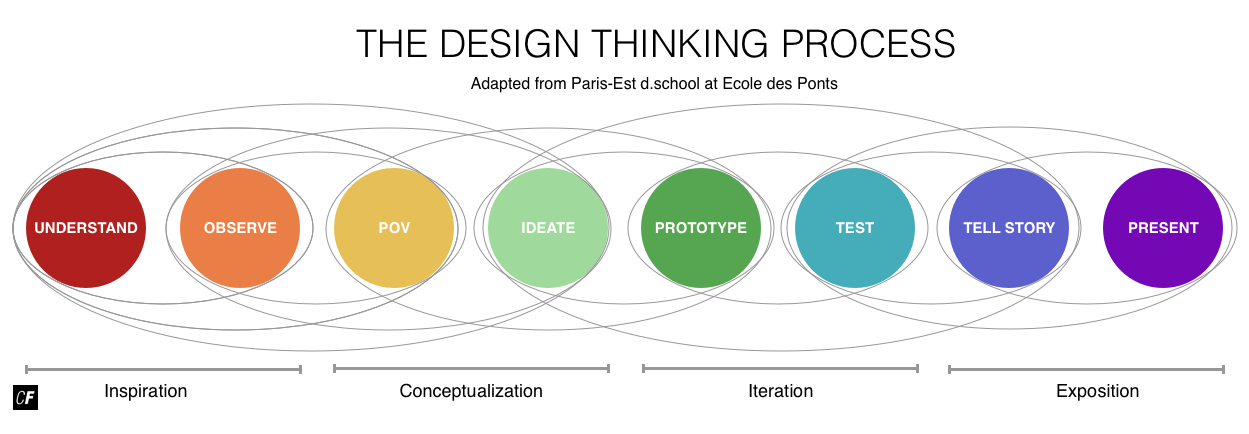
Although this process may seem intimidating or contradictory at first, there are many benefits of an iterative process:
- Generative research informs decision making
- Evaluative research validates decision making
- Embracing iteration means you can launch with a “minimal viable product” and continue to refine and improve
- Testing and investing in UX early actually saves money in the long term in re-work and re-tooling
So far, we’ve just touched the tip of the iceberg in terms of the world of UX, but, hopefully, you now have a better understanding of how this relates to the world of marketing. More and more, organizations are leveraging design to drive business forward. But why is it that some companies’ efforts are more influential than others? What makes them different? In 80% of US/global companies, the majority of projects include design team participation. But, according to digital product design and development platform InVision, only the top 5% of organizations are tackling design in a truly integrated way that is elevating strategy, increasing market share, and surging employee impact. Understanding your user in a way that brings a human element to your day-to-day efforts can help rally teams to solve real problems in the world.
If you’re interested in learning more about UX and how it applies to your marketing efforts, contact us today.


